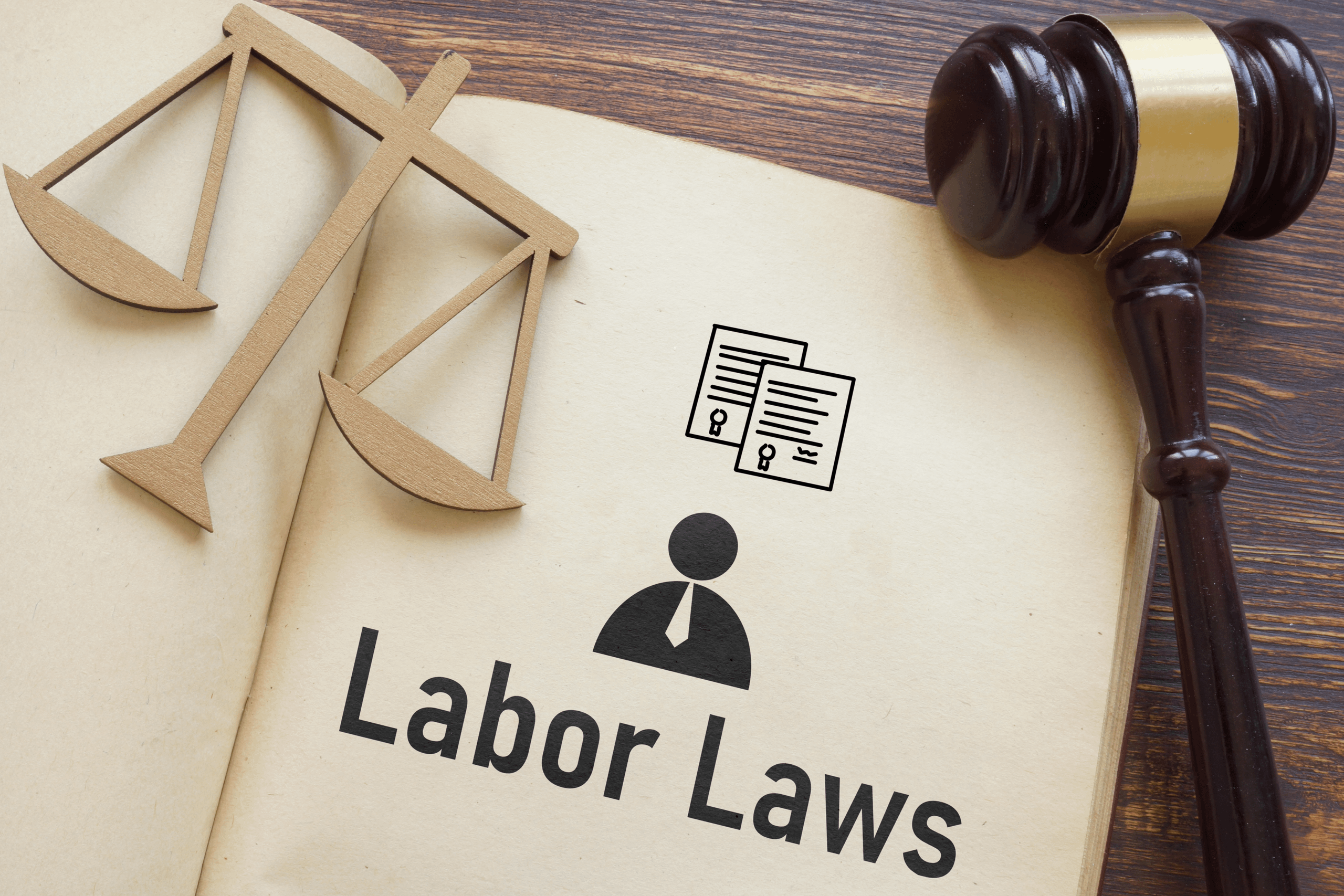By Steven J. Eisman, Esq. 1
Under the no-fault divorce package passed in October 2010, New York enacted guidelines for calculating temporary maintenance based on the respective incomes of the parties. Although the stated purpose of the guidelines was to provide consistency and predictability for interim maintenance awards, that has not been the case. Pursuant to the guidelines, an award of temporary maintenance is determined by applying a formula to the parties’ respective incomes in circumstances where the less monied spouse’s income is less than two-third (2/3) of the more monied spouse’s income.2 By way of example, if the paying spouse has an annual income of $90,000 a year, then a temporary maintenance award is only available if the income of the less monied spouse falls below $60,000. The definition of income follows that set forth in the Child Support Standards Act (CSSA), and includes any income from property that is subject to equitable distribution.3
The formula applies to the first $524,0004 of the more monied spouse’s income (the “payor”). In cases where the payor’s income exceeds $524,000, the court must first apply the formula to $524,000, and then consider a list of nineteen (19) factors in determining whether to deviate from the presumptive award.5 In applying the formula, the court must perform several calculations, initially determining the adjusted gross income of each party. After the court ascertains the parties’ income, the presumptive award is calculated as the lesser of a) 30% of the payor’s income minus 20% of the non-payor’s income or b) 40% of the combined income minus the non payor’s income.6 Therefore, the maximum presumptive interim maintenance award (where one spouse earns $524,000 and the other spouse has no income) is $157,200 per year. If the court determines that the presumptive maintenance award is unjust or inappropriate, the court may adjust the award upon consideration of a seventeen (17) factors, which must be accompanied by a written decision detailing all the reasons for such deviation.7 In practice, Judges have been reluctant to deviate from the statutory calculation.8
Prior to the passage of interim maintenance guidelines, Judges had the discretion to award temporary maintenance based upon the parties’ actual needs through a careful analysis of the spouses’ incomes and expense records and testimony about family obligations. Interim maintenance was awarded to enable the less monied spouse to maintain the status quo and to ensure that necessities, such as housing and health insurance, continued to be paid during the pendency of the divorce case.9 In the absence of guidelines, interim maintenance awards were often inconsistent and lacked predictability. While the formulaic approach was intended to correct this inequity, many practitioners have found that it has done just the opposite. Since the enactment of the law, Judges’ temporary maintenance awards continue to vary widely.10
The interim maintenance guidelines shifted the award of temporary maintenance from one based on need and preservation of the status quo to one based primarily on income. This shift, many argue, has led to severe results, including the disproportionate redistribution of income.11 The law has the dangerous potential to shift income and transform the monied spouse into the less monied spouse and vice versa. Some legal analysts suggest that the guidelines protect the less monied spouse at the expense of bankrupting the monied spouses who pay spousal maintenance.12 By focusing primarily on salary rather than the actual needs and circumstances of the parties, the guidelines lead to a shift in actual financial resources and an unbalanced redistribution of wealth between spouses. 13
As it stands, the temporary maintenance law is creating more problems for divorce litigants than it has solved. The formula fails to address the payment of household carrying charges, such as mortgage or utility payments, or how the balance between temporary maintenance, child support and counsel fees should be equitably determined. Since interim maintenance awards made under the guidelines use an income shifting approach rather than considering the actual needs of the parties, the result undermines the language of the revised counsel fee statute and can lead to double dipping. Under the revised counsel fee provision in DRL 237, there is a presumption that the monied spouse must pay the less monied spouse’s counsel fees. However, since the interim maintenance guidelines attempt to equalize the parties’ incomes, the distinction between the spouses is much less apparent. Even so, after calculation of temporary maintenance awards, so-called “monied spouses” are still being ordered to pay counsel fees of the “less monied spouse” on top of child support and other “add-on” expenses, which only serves to exacerbate the redistribution problem.
The interim maintenance guidelines also lend themselves to a rigid, formulistic award at the expense of the Judge’s discretion. Unless a Judge decides to deviate from the presumptive award, factors such as the duration of the marriage, health of the parties and age of the parties are disregarded. Application of a formula based primarily on the respective income of the parties’ leaves little room for consideration of important factors unique to each case. Less monied spouses, who would not otherwise be entitled to an award of maintenance at the conclusion of the case, are unjustly benefiting from the interim maintenance guidelines. As a result, these cases become more difficult to resolve as the spouse receiving interim maintenance has an incentive to delay resolution of the litigation process for as long as possible.14
In addition to the concerns of practitioners and divorce litigants, Judges state that the gaps and inconsistencies in the interim maintenance guidelines lead to vastly different interpretations and problems in applying the statute.15 For example, the law states that the value of income to be distributed upon equitable distribution is to be factored into the equation for interim maintenance purposes.16 However, asset distribution is not determined until the conclusion of the case. Hence, this provision of the temporary maintenance statute has no basis in reality. Furthermore, Judges dispute whether a formulaic approach to determining interim maintenance is the proper one.17
The guidelines require Judges to weigh the veracity of income figures given by the litigants and determine the true income of the parties at the pendente lite stage of the case, which can often be very difficult to do. Furthermore, the needs of the payee spouse and the ability to meet those needs by the payor spouse are not even considered.
Many, if not all, of the cases applying the temporary maintenance guidelines raise concerns about the application of the formula and illustrate the shortcomings discussed above. Some cases call into question the calculation of the presumptive award of temporary maintenance.18 See e.g. Scott M. v. Illona M.19; C.K. v. M.K.20; Margaret A. v. Shawn B.21; and AC v. DR.22 Other cases raise issues about the relationship between a formulaic approach to interim maintenance, and decisions about child support awards, attorneys’ fees, tax consequences and other “add-on” expenses made pendente lite.23 See e.g. J.H. v. W.H.24; and Jill G. v. Jeffrey G.25
In the case of J.H. vs. W.H.26, the husband had an income of $107,953 and the wife has an income of $11,660. Upon application of the guidelines, the husband was ordered to pay $26,708.26 per year to the wife in temporary maintenance. After the award of interim maintenance, child support, and tax consequences, the wife had an income of $58,252.85 and the husband $41,000.40. Here, the court recognized that due to the redistribution of income, the husband could no longer be considered the “monied spouse.” As a result, he did not have to pay the wife’s counsel fees.
In the case of Scott M. v. Ilona M.27, the husband had an income of $156,000 and the wife had an income of $34,000. After an application of the child support and temporary maintenance guidelines, the court found that if the temporary maintenance guidelines were rigidly applied, the husband would be left with an income of $39,000, whereas the wife’s income would be $78,000. Even after the court deviated from the guidelines, the husband still had only $51,000 in disposable income, compared to the wife’s $67,000.
In Scott M v. Ilona M., the court also noted that the shift in income caused by application of the interim maintenance guidelines must be taken in account when awarding counsel fees. The judge wrote: “[T]he Court cannot decide that just because one party ‘earns more’ than the other that they automatically become the ‘monied spouse’…
However, based upon the temporary maintenance and child support award, even with the deviation, you can no longer consider the husband as a ‘monied spouse’.” 28 Nevertheless, the wife was granted a $5,000 interim counsel fee award.
Judges have begun to notice the failings of the temporary maintenance guidelines and are adjusting their rulings accordingly.29 In March 2012, Justice Norman Janowitz of the Nassau County Supreme Court granted a downward modification of temporary maintenance in Jill G. v. Jeffrey G.30 Over a year ago, Judge Janowitz ordered Jeffrey G to pay his wife, Jill G, over $17,000 in temporary maintenance, despite the fact that his monthly income as an investment banker was only $12,775. Ms. G is employed as a guidance counselor, earning $103,000 a year. Mr. G was laid off in August 2011.
In a decision dated March 12, 2012, Judge Janowitz declared his original decision in this case to be “unjust and inappropriate” and substantially reduced how much Mr. G must pay his wife in temporary maintenance and child support. Mr. G’s monthly maintenance payments were reduced to $5,000 from $10,783.33 and were made taxable to his wife; child support was reduced to $2,000 from $2,594.
In the decision Judge Janowitz wrote, “The Court did not consider how the totality of the court-directed payments would impact the parties’ economic reality on a month to month basis.” In light of the inherent flaws in the temporary maintenance guidelines, the law has been analyzed by the state’s independent Law Revision Commission. Pursuant to Chapter 371 of the Laws of 2010, the Commission was directed to review the state’s maintenance law and publish a report on their findings.31 Prior to the Governor’s signing of Chapter 371, the Commission conducted a review of the revised Domestic Relations Law (DRL) 236B at the request of the Honorable Helene Weinstein, Chair of the New York State Assembly Judiciary Committee. This review led to a Commission Report issued on June 11, 2010.32 Upon further review, the commission issued a Preliminary Report on Maintenance in May of 2011, wherein the Commission wrote that “while substantial anecdotal evidence exists of problems of unpredictability and inconsistency with court awards….there is insufficient empirical data [at this time] from which to draw meaningful conclusions about maintenance awards generally.” 33 As a result, a final report is expected from the Commission in mid-April of this year.34
Although the commission’s recommendations are advisory rather than binding, they carry weight for legislators who will be considering revisions to the law before the legislative session ends in June. Armed with recommendations from the Law Revision Commission, legislators are tasked with the difficult job of continuing to safeguard the needs of less monied spouses while considering the resources available to the monied spouse. Access to interim maintenance must be ensured for individuals who do not have sufficient resources. At the same time, the financial distress for the payor spouse that can result from payment of interim maintenance, counsel fees, carrying charges and child support payments must be considered and addressed.
With these factors in mind, the legislature should revise the interim maintenance law in a way that allows courts the flexibility to once again balance the reasonable needs of the less monied spouse with the resources available to the monied spouse such that a rigid application of guidelines does not create a windfall on one side nor an unbearable financial hardship on the other. Interim maintenance laws were intended to allow both parties to maintain the marital lifestyle during the pendency of the proceeding. The current law certainly does not accomplish this goal. As we look towards the revision of the interim maintenance statute, matrimonial attorneys throughout the state, as well as matrimonial Judges and litigants, are hoping for a fair solution that covers the needs of divorcing spouses at every income level.
1 Steven J. Eisman, Esq., an executive partner at Abrams, Fensterman, Fensterman, Eisman, Formato, Ferrara & Einiger, LLP, is a Fellow in the American Academy of Matrimonial Lawyers, and currently serves as the Treasurer of the Nassau County Bar Association. Hilary F. Casper, a law clerk at Abrams Fensterman and a Notes & Comments Editor of the Hofstra Law Review, assisted in the preparation of this article.
4 Pursuant to Dom. Rel, L, § 236 [B][5-a][b][5], The “cap” on each spouses’ annual income, to be utilized in calculating temporary maintenance orders, has increased from $500,000 to $524,000 effective January 31, 2012.
5 Dom. Rel. L. § 236B (5-a)(c)(2)(a)(i)-(xix).
6 Dom. Rel. L. § 236B (5-a). See also The New York State Law Revision Commission Preliminary Report on Maintenance Awards in Divorce Proceedings, May 2011 available at http://www.lawrevision.state.ny.us/May_11_2011_Preliminary_Report_on_Maintenance.pdf.
7 Dom. Rel. L. § 236B (5-a)(e)(1)(2).
8 Stashenko Joel, Divorce Cases are Complicated by New Maintenance Rules, N.Y.L.J. (October 12, 2011).
10 Polsky, Carol, Temporary-support rules knocked, NEWSDAY (March 11, 2012).
11 Stashenko Joel, Divorce Cases are Complicated by New Maintenance Rules, N.Y.L.J. (October 12, 2011).
12 Hollander, Sophia, Divorce Law’s New Cut, Changes Meant to Protect the Poor are Mandating Bigger Alimony Payouts, WSJ (March 12, 2012).
14 See Barics, J. Douglas, Temporary and Pendente Lite Maintenance in New York Divorces (July 2011), available at http://www.jdbar.com/Articles/temporary-maintenance.html.
15 Stashenko Joel, Divorce Cases are Complicated by New Maintenance Rules, N.Y.L.J. (October 12, 2011).
17 Stashenko Joel, Divorce Cases are Complicated by New Maintenance Rules, N.Y.L.J. (October 12, 2011).
18 The New York State Law Revision Commission Preliminary Report on Maintenance Awards in Divorce Proceedings, May 2011 available at http://www.lawrevision.state.ny.us/May_11_2011_Preliminary_Report_on_Maintenance.pdf.
19 31 Misc.3d 353, 915 N.Y.S.2d 834 (Sup. Ct. Nassau Co. 2011)(Sunshine, Jeffrey S., J.). 20 N.
20 N.Y.S2d 2011 WL 1563792 (Sup. Ct. Rockland Co. 2011) (Weiner, Alfred, J.)
21 N.Y.S.2d 2011 WL 893015 (Sup. Ct. Westchester Co. 2011) (Connolly, Francesca, J.)
22 N.Y.S.2d 2011 WL 1137739 (Sup. Ct. Nassau Co. 2011) (Falanga, Anthony, J).
23 The New York State Law Revision Commission Preliminary Report on Maintenance Awards in Divorce Proceedings, May 2011 available at http://www.lawrevision.state.ny.us/May_11_2011_Preliminary_Report_on_Maintenance.pdf.
24 31 Misc. 3d 1203(A), 2011 WL 1158653 (Sup. Ct. Kings Co. 2011) (Thomas, Delores, J., J.).
25 31 Misc.3d 1209(A), 2011 WL 1364481 (Table) (Sup. Ct. Nassau Co. 2011) (Janowitz, Norman, J.)
26 31 Misc. 3d 1203(A), 2011 WL 1158653. See also discussion of case in Clement, Daniel, New York’s Temporary Maintenance and Child Support Laws Cause a Redistribution of Income (April 7, 2011), available at http://divorce.clementlaw.com/spousal-maintenance/new-yorks-temporary-maintenance-and-child-support-laws-causes-a-redistribution-of-income/.
27 31 Misc.3d 353, 915 N.Y.S.2d 834. See also discussion of case in Clement, Daniel, Judge Deviates from Temporary Maintenance Formula (Feb 3, 2011), available at http://divorce.clementlaw.com/spousal-maintenance/new-yorks-temporary-maintenance-and-child-support-laws-causes-a-redistribution-of-income/.
28 31 Misc.3d 353, 915 N.Y.S.2d 834.
29 See Hollander, Sophia, Divorce Ruling Revised, Judge Reverses Decision Faulted as Example of Flaw in New Matrimonial Law, WSJ (April 1, 2012).
30 31 Misc.3d 1209(A), 2011 WL 1364481.
31 The New York State Law Revision Commission Preliminary Report on Maintenance Awards in Divorce Proceedings, May 2011 available at http://www.lawrevision.state.ny.us/May_11_2011_Preliminary_Report_on_Maintenance.pdf.
34 As of the writing of this article, the final Commission Report has not yet been published.





